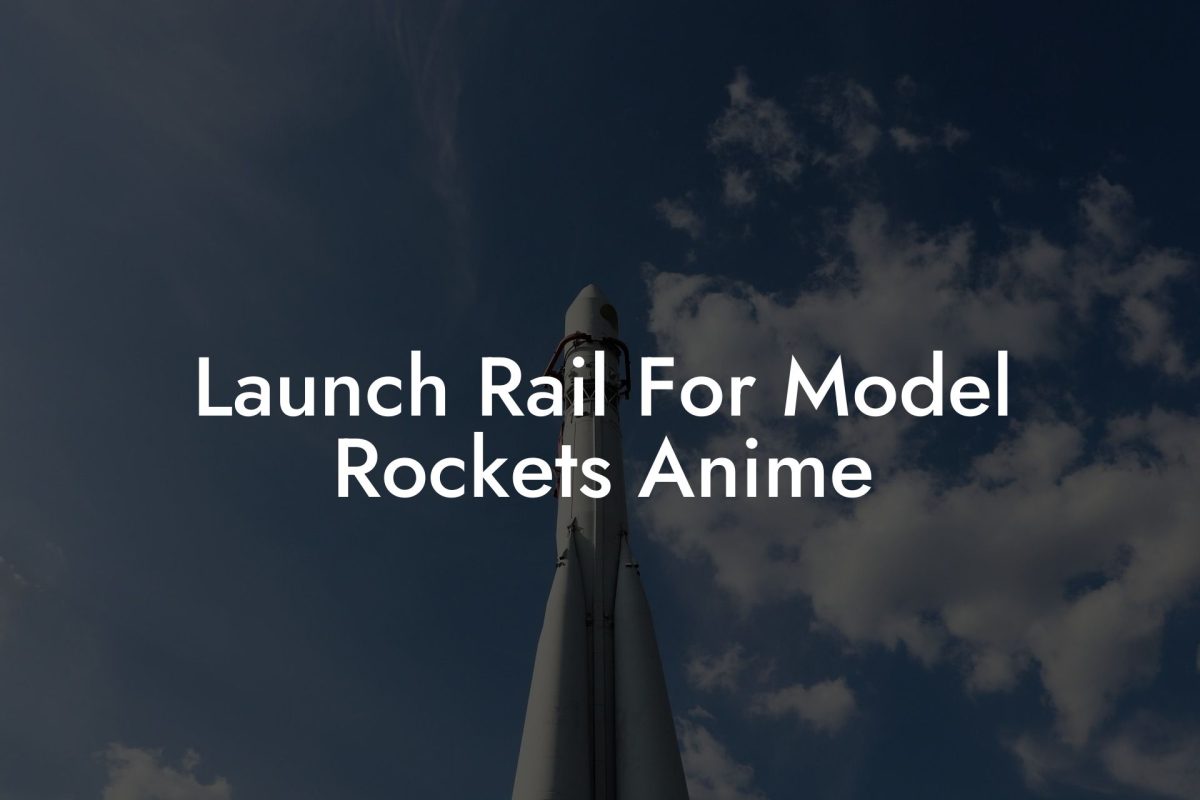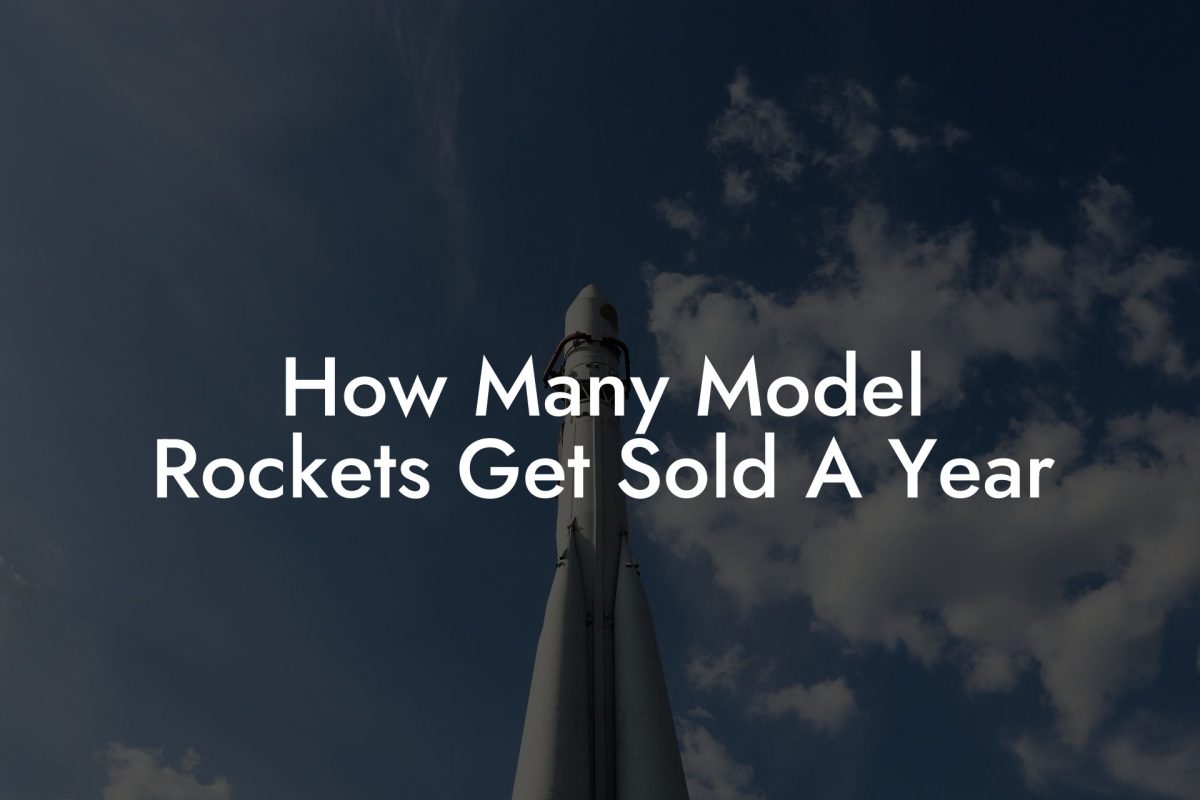Imagine the thrill of watching your very own model rocket soar into the sky, leaving a trail of excitement and curiosity in its wake. As you delve into the world of model rocketry, you'll discover a fascinating realm where science, technology, and imagination converge. Whether you're a seasoned enthusiast or just starting out, experimenting with model rockets offers a unique opportunity to explore the wonders of aerodynamics, propulsion, and space exploration.
Quick Links to Useful Sections
- What Are Model Rockets?
- The Science Behind Model Rockets
- Getting Started with Model Rockets
- Choosing the Right Kit
- Understanding Safety Precautions
- Assembling and Launching Your Rocket
- advanced Model Rocketry Techniques
- Resources and community Support: Your Next Steps
- Online Forums and Communities
- Local Model Rocketry Clubs
- Model Rocketry Events and Competitions
- Frequently Asked Questions: Experimenting with Model Rockets
What Are Model Rockets?
Model rockets are scaled-down versions of real rockets, designed to mimic the flight characteristics of their full-scale counterparts. They typically range in size from a few inches to several feet tall and are powered by small motors that produce a controlled amount of thrust. Model rockets can be made from a variety of materials, including plastic, wood, and composite materials, and often feature intricate details and paint schemes.
The hobby of model rocketry has been around for decades, with enthusiasts of all ages drawn to the thrill of designing, building, and launching their own rockets. From simple, entry-level kits to complex, custom-built models, there's a model rocket to suit every skill level and interest.
The Science Behind Model Rockets
Model rockets are more than just toys – they're a gateway to understanding the fundamental principles of aerodynamics, propulsion, and space exploration. By experimenting with model rockets, you can gain hands-on experience with concepts like:
- Aerodynamics: Learn how air resistance, lift, and drag affect the flight of your model rocket.
- Propulsion: Explore the different types of model rocket motors, including solid-fuel, liquid-fuel, and hybrid engines.
- Stability and Control: Discover how to design and build a stable model rocket that can withstand the stresses of flight.
- Trajectory and Navigation: Understand how to predict and track the flight path of your model rocket.
By applying these scientific principles, you can optimize the performance of your model rockets and take your hobby to new heights.
Looking For The Best Model Rocket Kits? You'll Love These:
Getting Started with Model Rockets
If you're new to model rocketry, getting started can seem overwhelming. But don't worry – with a little guidance, you'll be launching your own model rockets in no time!
Choosing the Right Kit
Selecting the right model rocket kit is crucial for a successful and enjoyable experience. Consider factors like skill level, budget, and desired complexity when choosing a kit.
Understanding Safety Precautions
Safety should always be your top priority when working with model rockets. Make sure you understand the risks and take necessary precautions to avoid accidents.
Assembling and Launching Your Rocket
Follow the instructions carefully, and don't be afraid to ask for help if you need it. When you're ready, find a safe and suitable launch site, and get ready to experience the thrill of launch!
advanced Model Rocketry Techniques
Once you've mastered the basics, it's time to take your model rocketry skills to the next level. Explore advanced techniques like:
- Custom Design and Fabrication: Learn to design and build your own model rockets from scratch.
- Electronic Payloads: Add sensors, cameras, and other electronic components to your model rockets for enhanced data collection and analysis.
- High-Power Rocketry: Experiment with larger, more powerful model rockets that can reach incredible altitudes.
- Competitive Model Rocketry: Join a local or national model rocketry competition to test your skills against other enthusiasts.
By pushing the boundaries of what's possible with model rockets, you can unlock new challenges, opportunities, and experiences.
Resources and community Support: Your Next Steps
Whether you're just starting out or an experienced model rocketeer, there are many resources available to help you take your hobby to the next level.
Online Forums and Communities
Join online forums and social media groups dedicated to model rocketry to connect with other enthusiasts, share knowledge, and learn from their experiences.
Local Model Rocketry Clubs
Look for local model rocketry clubs or organizations in your area, where you can meet fellow enthusiasts, attend launches, and participate in group projects.
Model Rocketry Events and Competitions
Attend model rocketry events, competitions, and festivals to showcase your skills, learn from others, and stay up-to-date with the latest trends and innovations.
Frequently Asked Questions: Experimenting with Model Rockets
Here are some frequently asked questions about experimenting with model rockets:
1. What is the best way to get started with model rocketry?
Start with a beginner-friendly kit, follow the instructions carefully, and don't be afraid to ask for help if you need it.
2. How do I ensure safety when launching model rockets?
Always follow safety guidelines, choose a safe launch site, and wear protective gear to minimize the risk of accidents.
3. Can I customize my model rocket with electronic components?
Yes, you can add electronic components like sensors, cameras, and GPS modules to your model rocket for enhanced data collection and analysis.
4. How high can model rockets fly?
The altitude reached by a model rocket depends on the type of motor, design, and other factors. Some high-power model rockets can reach altitudes of over 10,000 feet!
5. Are model rockets expensive?
Model rockets can range from affordable to very expensive, depending on the complexity, materials, and features. You can start with a basic kit and upgrade as you gain experience.
Looking For The Best Model Rocket Kits? You'll Love These:
Useful Interruption: Dive deeper into the world of Model Rockets with our most popular sections. If there is anything you think is missing or anything you would love for us to write about, just give us a shout.
- Getting Started & Basics With Model Rockets
- Model Rocket Design, Build & Customization
- Model Rocket Propulsion & Engine Technology
- Model Rocket Launch Techniques & Recovery
- Model Rocket Advanced Rocketry & Innovations
- Model Rocket DIY and Customization
- Model Rocket Equipment Reviews & Digital Tools
- Community, Competitions & Education
- Model Rocket Troubleshooting & FAQs
- Model Rocket Bonus/Seasonal & Niche Topics
A group of model rocket enthusiasts gathered at a field for their weekly launch event. Among them was Dave, a seasoned builder known for pushing the limits of hobby rocketry. This time, he had outdone himself.
“Ladies and gentlemen,” Dave announced, dramatically pulling a cloth off his latest creation, “I present to you: The Kraken!”
The crowd gasped. This wasn’t just a model rocket, it was a monster. The thing stood 8 feet tall, had six clustered engines, and was covered in enough duct tape to qualify as a classified aerospace project.
“Dave,” muttered Steve, the cautious safety officer, “Have you, uh… done the math on this?”
“Math?” Dave scoffed. “I built it in my garage at 3 a.m. with parts from eBay. This is an art piece, Steve.”
The countdown began.
5…
4…
3…
2…
1…
The engines ignited with a BOOM, and The Kraken shot up… kind of. It immediately did a violent barrel roll, narrowly missing the spectators before skyrocketing at an angle that could only be described as “legally questionable.”
The crowd collectively ducked as The Kraken flew straight over the adjacent cornfield, where Old Man Jenkins, the grumpiest farmer in town, was minding his business.
KABOOM!
The rocket disappeared behind the barn. A moment later, a flaming piece of Estes igniter wire landed at Steve’s feet. The silence was deafening.
And then, an unmistakable sound echoed across the field.
Jenkins’ shotgun being cocked.
“DAVE!!!” Steve shouted. “RUN.”
And that was the day Dave invented the first-ever biologically powered rocket booster: pure adrenaline.
To this day, nobody knows where The Kraken landed, but legend has it, it still haunts the skies, terrifying unsuspecting drones and low-flying birds.















